Already driving decent traffic and leads to your site? Kudos to you — the top-of-the-funnel content you’re creating is bringing phenomenal results.
But don’t just stop there— because you need to move these folks down your content marketing funnel. Meaning: you need more content to educate these leads who are now problem-aware and are looking for a solution to their struggle.
That’s where Middle of Funnel (MOFU) content comes in.
It’s content that positions your product/service as a potential solution for leads your top funnel content brings in — all without taking a sales-first approach.
Sounds tricky? It’s really not. This guide takes you through creating MOFU content that engages and converts leads while maintaining your audience’s trust. We’ve also got examples from other brands winning at producing this type of content.
Let’s dive in. But first:
Like top-of-the-funnel-content (TOFU), middle-of-funnel content takes an educational approach. Except it goes deeper into answering leads’ questions by explaining how your product/service can solve their struggles.
Keep in mind: at this point, leads are problem aware and are actively considering solutions.

MOFU content positions your business as the right solution for them by diving into:
- Why your product is a helpful solution
- How your product is better than other solutions they may be considering
- And who trusts your product/service by featuring social proof to gain new leads’ trust
The only catch here? Even though MOFU content talks about your product, you can’t take a salesy approach.
In fact, the key to winning at creating high-converting MOFU content is striking a balance between educating and selling your product as the solution.
Ben Sailer, the Director of Inbound Marketing at Automattic, shares:
If you focus purely on education, then your content will not move the user down the funnel. Focus too much purely on conversion, and the user is going to be put off and bounce. The key to making this work is understanding how to pull both of these levers in parallel while following your data to iterate on what’s working.
– Ben Sailer
Let’s look at each of these middle-of-funnel content types with examples below:
1. Product-Led Blog Content
In-depth blog posts that dive into a step-by-step breakdown of solving readers’ problems are a prominent MOFU content type.
Hotjar, a behavior analytics tool, leverages it to explain which of its tool features can solve a problem and how.
For example, this piece on advanced conversion techniques not only shares advanced techniques but also throws in a handful of ways Hotjar can improve conversion:
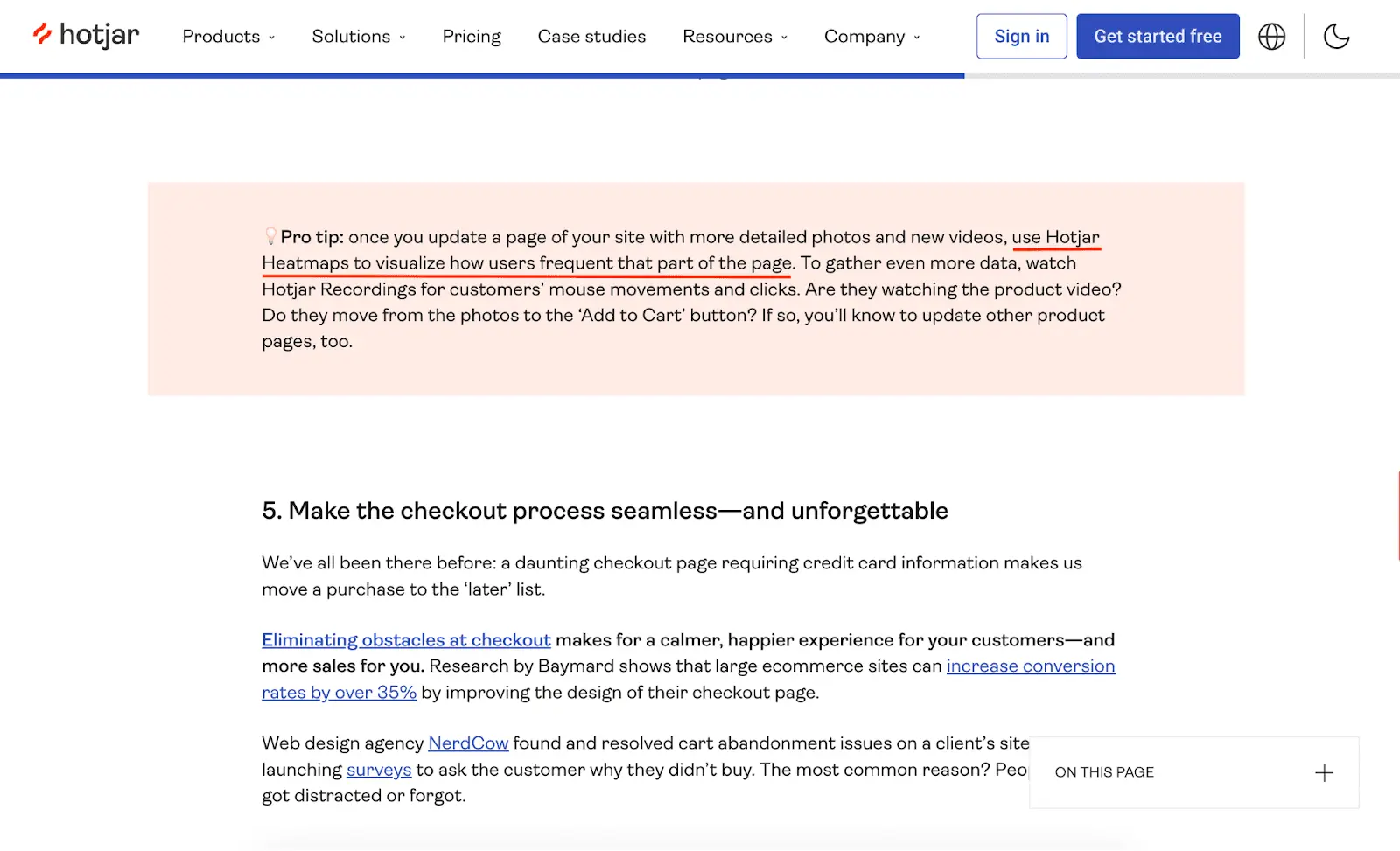
Check out these conversion techniques.
Note that the piece strikes a balance between educating and selling by sharing exactly which Hotjar features to use (in this case, heatmaps) and for what. This makes the content about the reader, saving it from coming across as salesy.
Throughout the piece, Hotjar also includes product screenshots to give an inside peep at how the product works and what it can do for interested folks.
2. Product Tutorials
These are videos explaining how your product can help leads scratch an itch. For instance, online video editor VEED publishes plenty of these on their YouTube video channel.

See more videos by VEED STUDIO here.
You can also embed these videos in your blog content. This will deliver SEO benefits and better assist visual learners in understanding how your product works.
3. Case Studies
Case studies help leads visualize their peers’ success, mentally transporting them to a world where they can achieve similar results.
For example, by reading this customer success story about how Calendly helped HackerOne drive 169% ROI, problem-aware readers better understand how the tool can benefit them — growing their interest in Calendly.
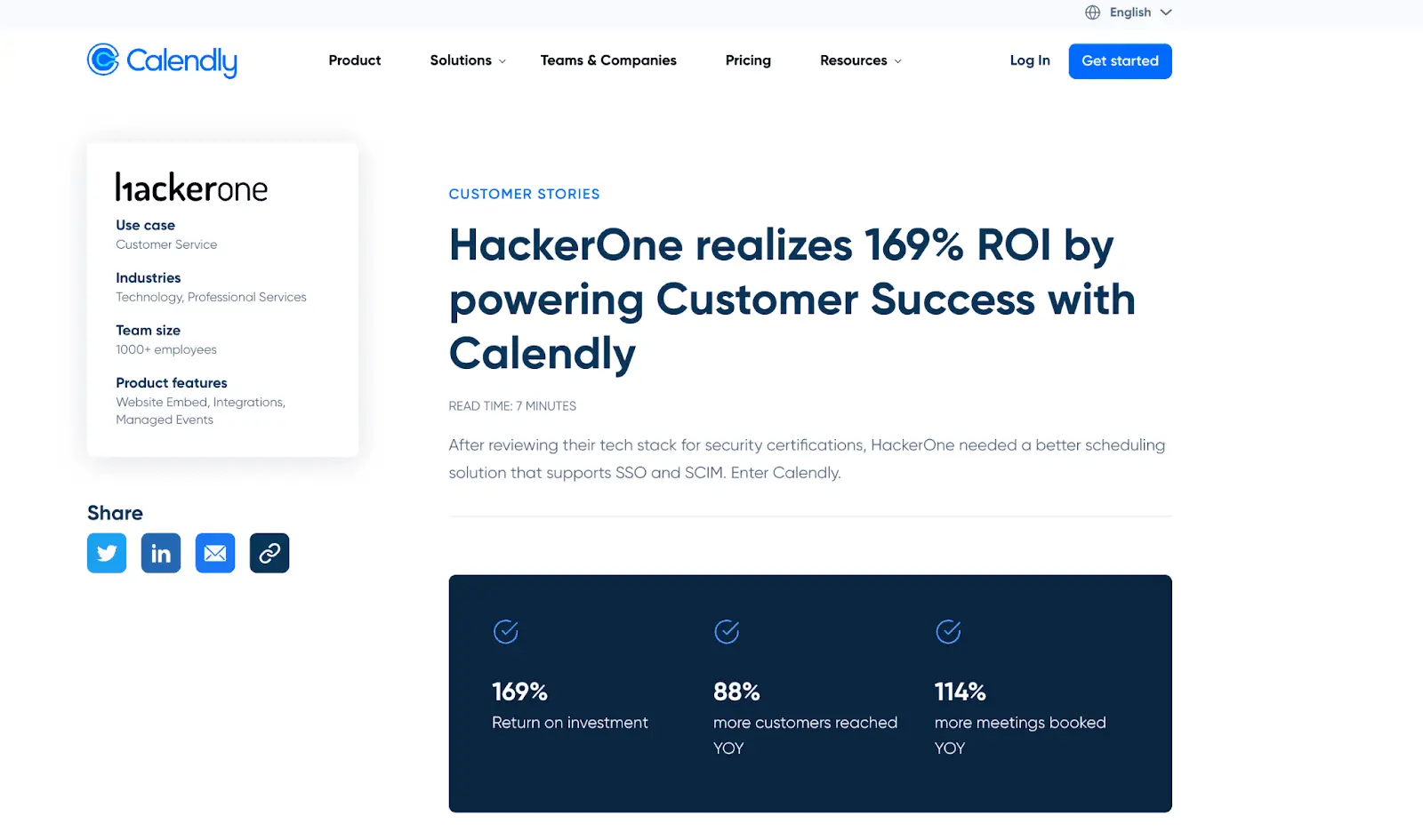
View other customer stories from Calendly.
4. Playbooks
Playbooks break down the exact steps an individual or team needs to take to achieve something.
ConvertFlow has a dedicated playbook corner that teaches people how to replicate conversion tactics that ConvertFlow’s real customers use.
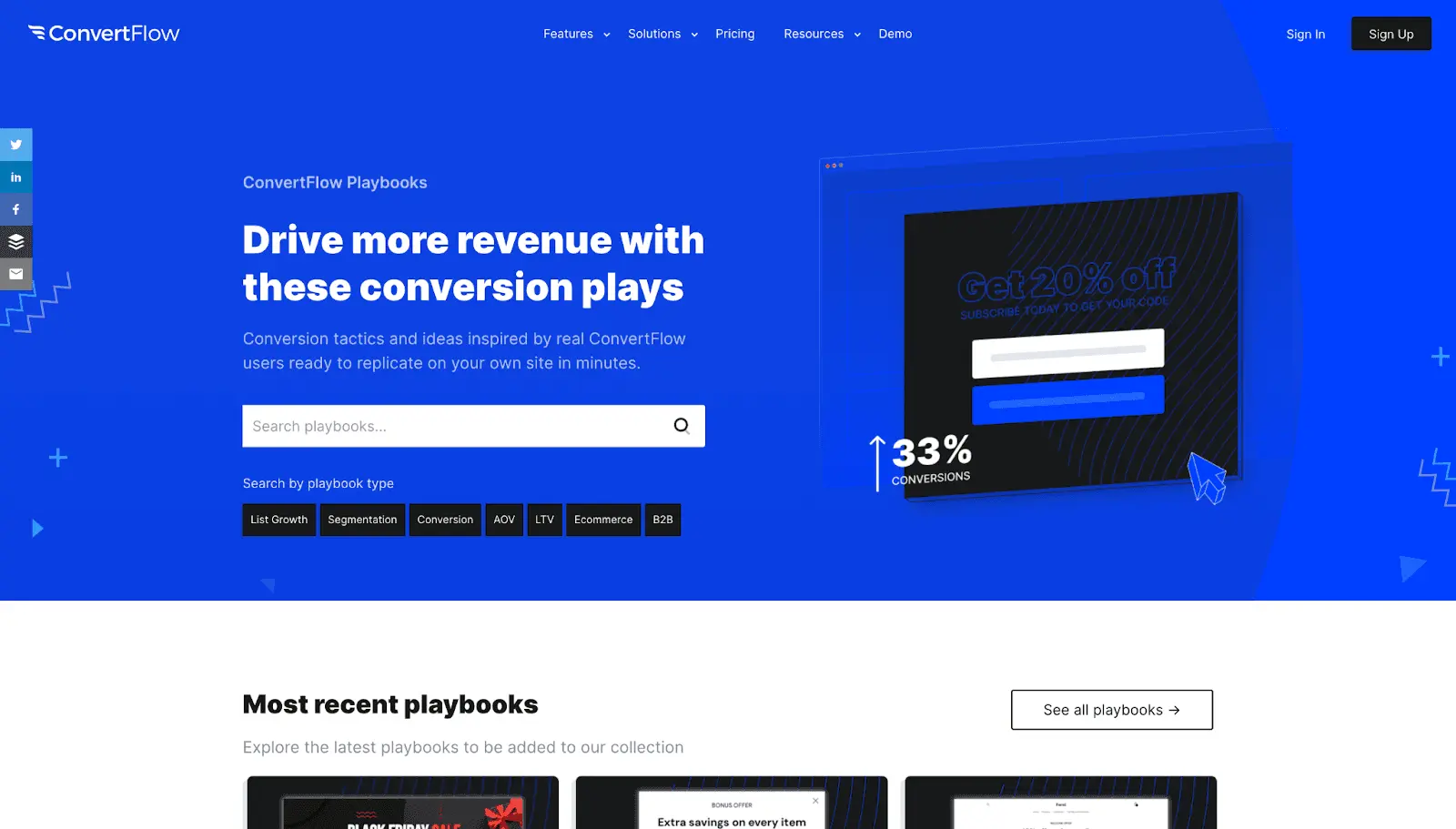
Check out more playbooks by ConvertFlow on their page.
There are multiple benefits to this type of MOFU content.
One, it grows social proof — interested leads can see how ConvertFlow is helping their peers drive excellent results.
Two, it empowers them to understand and use the tool better.
And three, this type of middle-of-the-funnel content is helpful for encouraging conversions and educating paying users — therefore, helping in the fourth stage of the content funnel focused on retaining customers.
5. Ebooks
Product-focused ebooks are another shape MOFU content comes in.
For instance, Freshsales CRM created this ebook on unified customer view — a feature their sales CRM offers — to educate prospects on why they need it and how it’d help them grow their business.
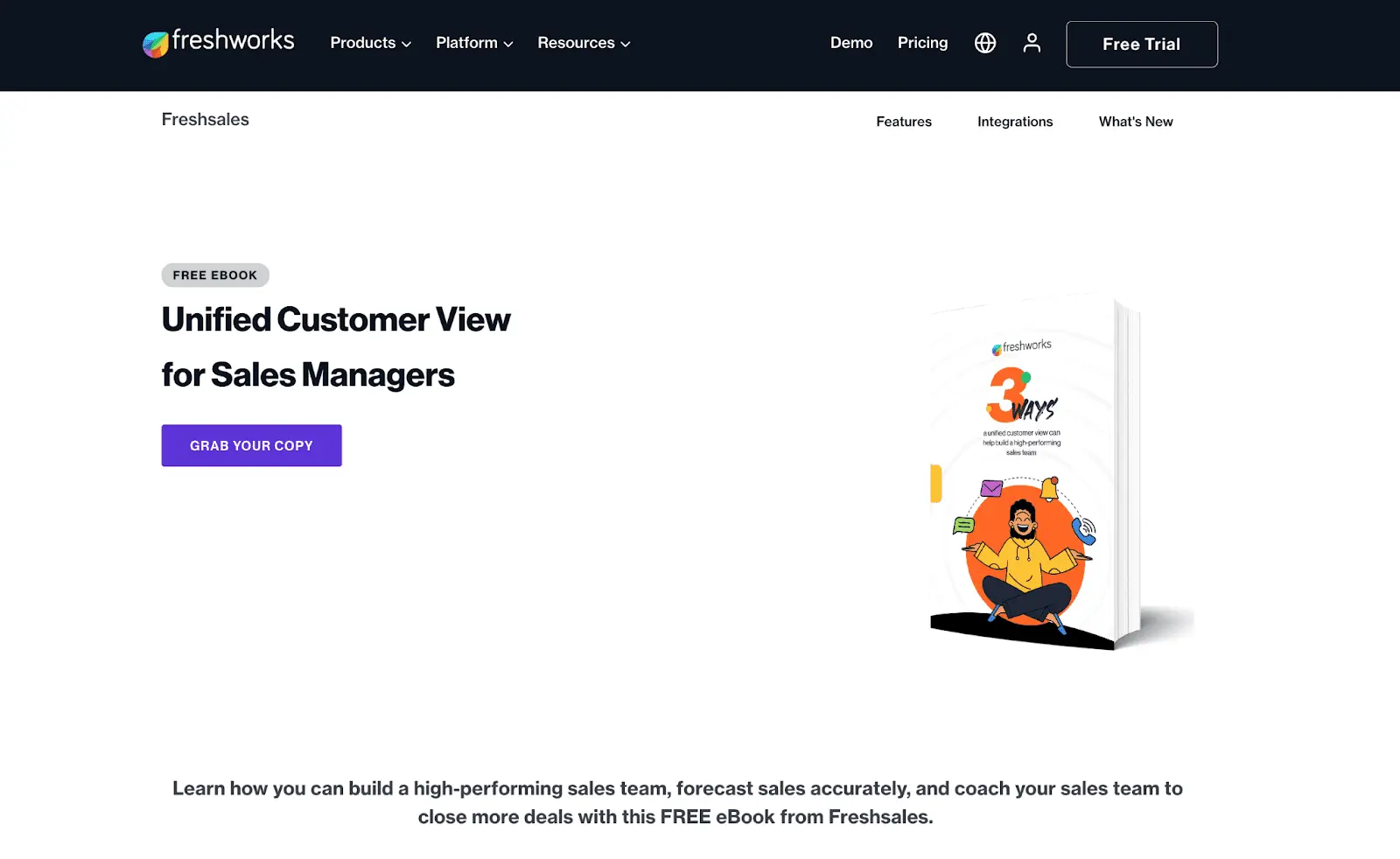
View more ebooks here.
6. Webinars
Webinars and other virtual events are a great way to come face-to-face with potential leads.
Your event can center around solving a specific question leads have — lightly touching on how your product can help. Or it could focus on walking viewers through how your product is the solution to folks’ problems.
Bonus points for featuring real customers in these webinars: that lets you leverage social proof to win your leads’ trust. For example, invite them to share how they use your tool in their workflow.
Alternatively, share a behind-the-scenes look at how your team uses your tool — here’s Miro doing the same:
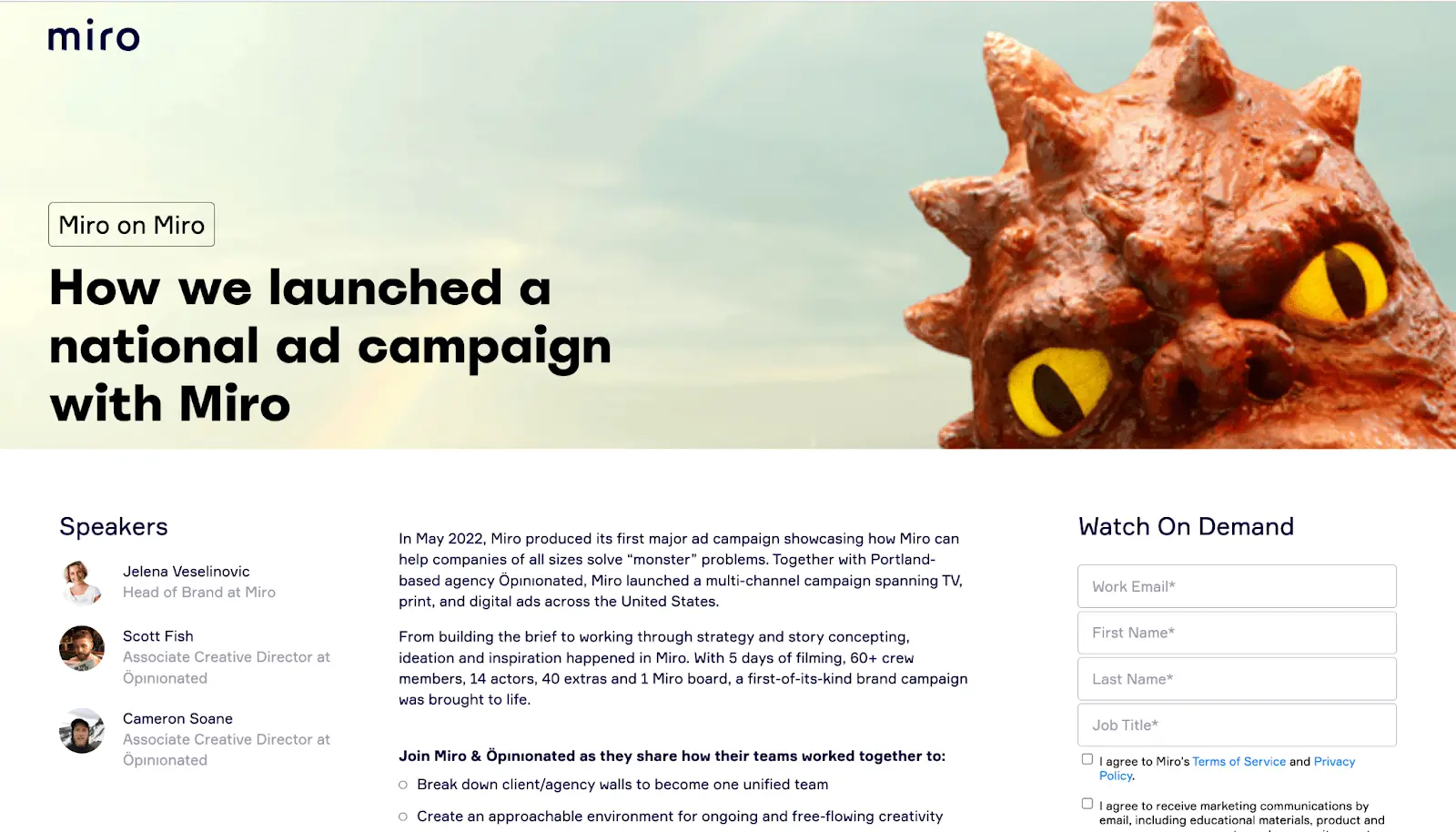
Read the full article here.
7. Newsletter
Newsletters are another great way to engage interested leads one-on-one.
You can also quiz your email list to learn more about their problems while sharing product tips with them.
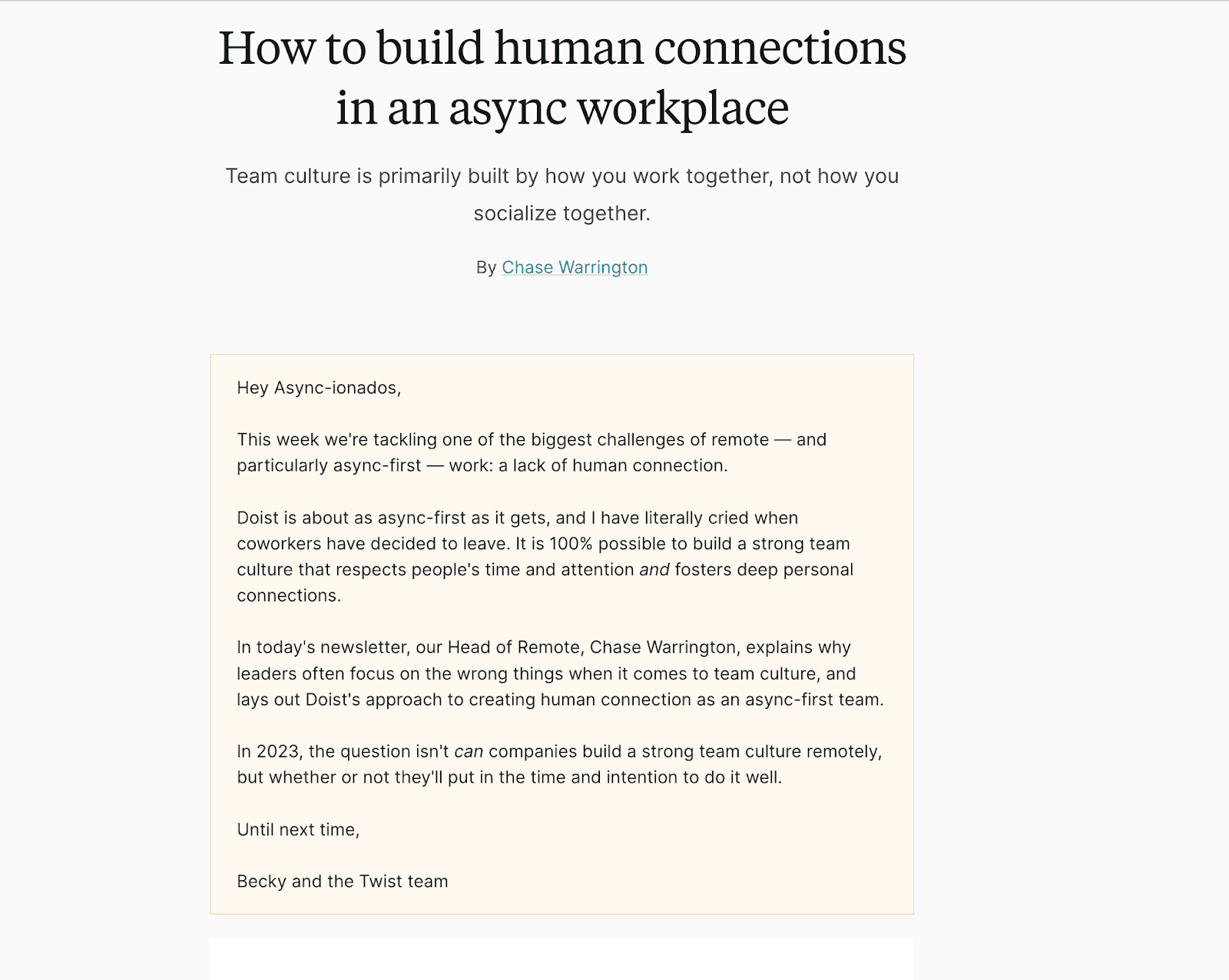
Check out the full piece here.
8. Whitepapers
Whitepapers and research reports go deeper into your customers’ problems, amplifying your authority in your industry.
Most of all, this type of MOFU content gauges leads’ interest by asking them to take action, such as signing up for your email list.
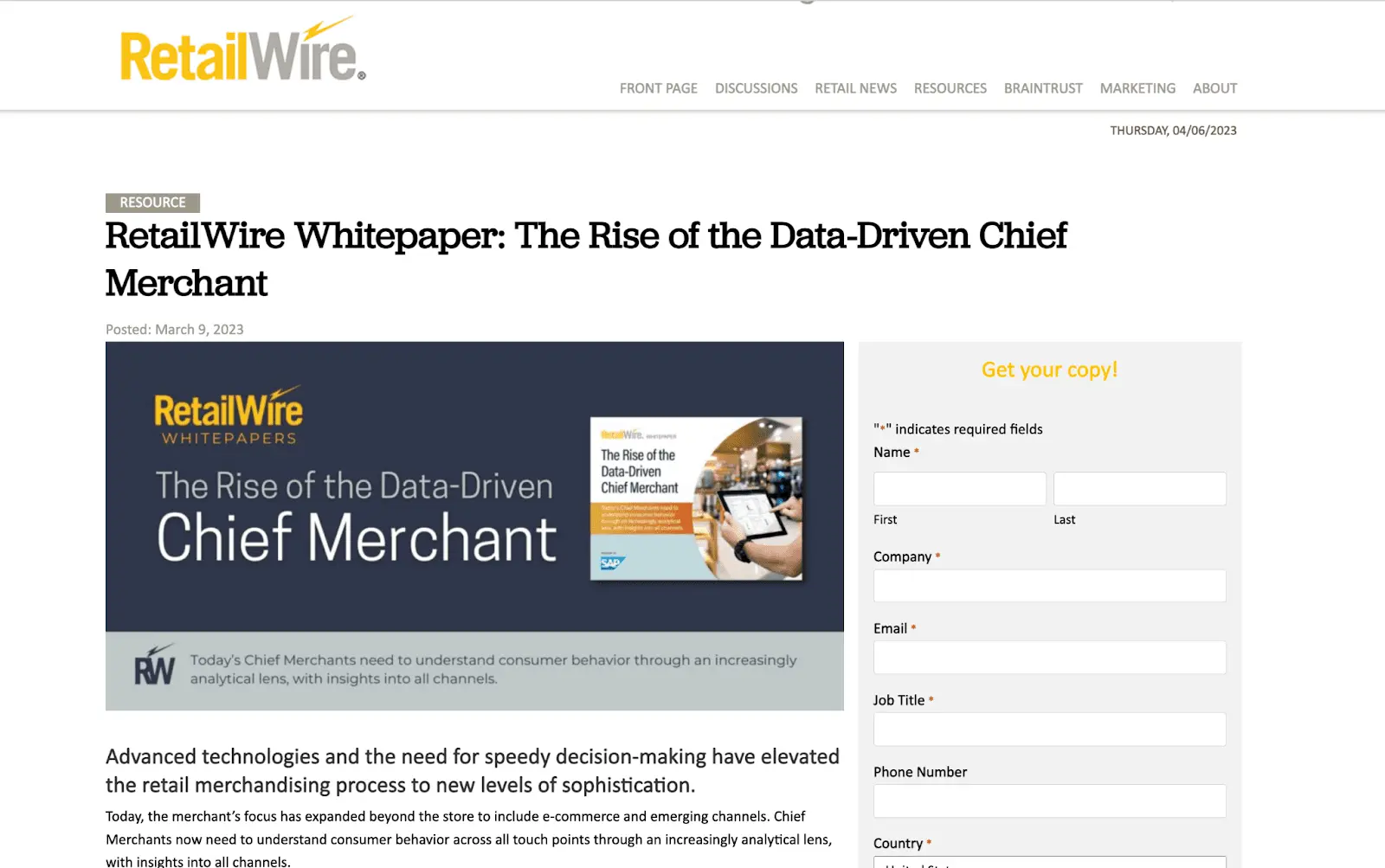
Read more about RetailWire whitepaper on their page.
9. Drip Email Campaigns
These are a series of 4-5 emails you send folks who download your content, such as whitepapers and cheat sheets.
The emails educate further on the topic, slowly encouraging them to try your product. After someone downloads their ebook, for example, GatherContent sends them a drip email campaign encouraging them to learn about their product.
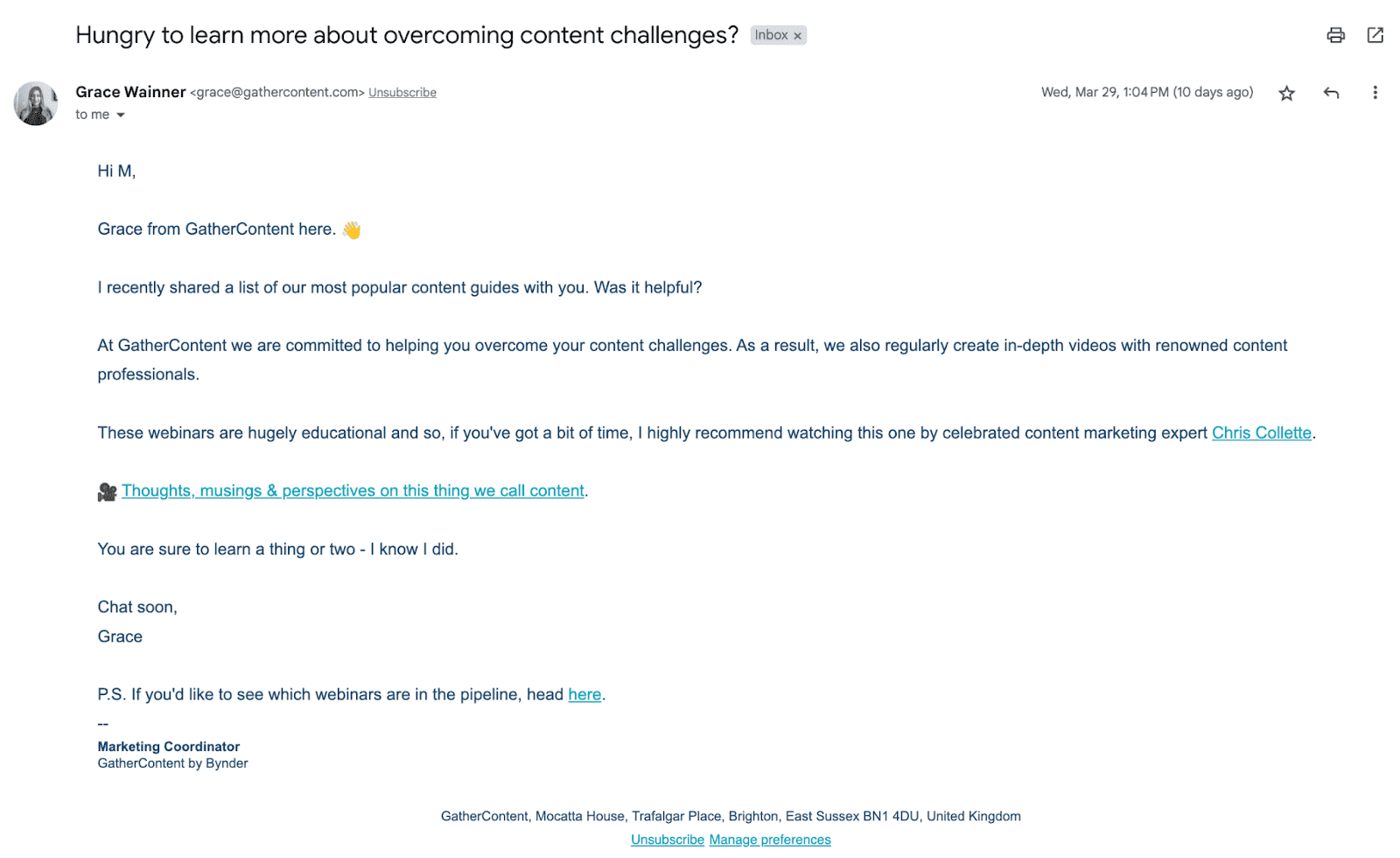
Now that you know that middle-of-funnel content is the essential bridge that converts leads into customers, let’s prepare you to create it.
Follow these five tips:
1. Understand & Document Your Product
You can’t create impactful MOFU content unless you and your content team (in-house or freelance) have a firm grip on your product.
Therefore, the best starting point is collaborating with your product team to understand your product’s benefits, unique selling proposition, and use cases.
From there, document your findings.
Create screen-recorded videos to educate your team on how the product works. And make a product cheat sheet that lists all the features and their use cases.
Reference these resources to plan and create product-led MOFU content.
2. Select Content Themes That Connect To Your Product
The right topics to add under your MOFU content bucket are ones that let you introduce your product. It’s why after you understand how your product solves your target buyers’ pain points, map out product-relevant content themes.
Shopify’s Content Team Lead, Kameron Jenkins, shares her process — one that you can replicate to create your MOFU content themes:
The most important foundational step I take when building a MOFU content strategy is selecting categories/themes that ladder up to the product. To do this, I list out all the features, benefits, and use cases of the product and use that to inform my publishing themes. That way, no matter the content format or funnel stage, all content can seamlessly tie back to the product.
-Kameron Jenkins
3. Collate Social Proof To Feature In Your MOFU Content
You’ll also want to coordinate with customer-facing teams to create a list of customer quotes about your product.
If they don’t have a log of customer testimonials, gather them from third-party review sites. You can also ask your customer-facing teams to share customer call recordings with you to unearth more quotes.
The idea is simple: use this list to feature your customers’ words in your middle-of-funnel marketing content. It’s a great way to add social proof to make a case for your business.
4. Map Out Your CTAs To Maximize Conversions
The proper CTA at the right place in your middle funnel content encourages conversions.
Remember, while you want to ‘nudge’ leads into becoming customers, you don’t want to ‘force’ them to do it.
It’s why all your CTAs must be strategically positioned and well thought out.
A simple way to plan your CTAs for each piece is to ask yourself: what’s the next logical step a reader/viewer would want to take?
“For example, case studies exist to convince people who might be evaluating your solution that they should choose your product, so the most logical case study CTA is often book demo/contact sales/start trial (or whatever your main conversion CTA is),” shares Kameron.
5. Track The Right KPIs To Measure Success
The best measure of MOFU content’s success is the conversions it drives.
According to Kameron, “By its nature, MOFU/product-led content exists to assist conversions, not necessarily earn general awareness and traffic quantity, so I think it’s important to judge it by that criteria.”
One other metric that you need to track: your content’s click-through rate for gauging potential buyers’ interest.
It tells whether your content encourages folks to learn more about your product. For example, by clicking to read bottom-of-the-funnel content or taking a free product trial.
With a solid foundation ready, use these tips to improve your content marketing program’s success:
1. Gradually Build Leads’ Profiles
After getting your leads’ contact details using the lead magnets you create with your TOFU content, encourage these folks to share more details with you.
This is essential for creating and sharing more relevant content with them — improving your conversion rate.
For example, create a poll in your newsletter where you ask recipients to select topics they want to learn about (read: their struggles). Then send them targeted emails with tips sharing how your product can help them.
2. Don’t Position Your Product As The ‘Most Perfect’ Solution
Sharing exactly what your product does and who it helps is key to attracting the right leads.
It can also repel certain leads. However, being honest in your product-led content pays off by bringing in loyal customers.
For instance, if you have a SaaS tool that doesn’t have a mobile app but your competitor does — be open about it. Tell your readers if they’re looking for a tool with a mobile app, you might not be a good fit for them.
Not only would interested users appreciate your honesty, but also refer you to others who are a better fit for your product. Because, at the end of the day, you’re saving them time by telling them you aren’t a good fit for them.
3. Use Familiar Faces To Drive More Engagement
Superside, a design-as-a-service business, regularly hosts live virtual events to connect with its target audience. Their host? Always the same person, their VP of Marketing, Amrita Mathur.
Similarly, all events and podcast episodes that the content distribution platform, The Juice, puts out are hosted by one face, Brett McGrath.
Know why? Because it helps these brands build familiarity.
Humans are more likely to remember other humans. Having the same faces creates brand affinity. Also, you can lift your MOFU content’s engagement by showing the humans behind your brand.
4. Remember MOFU Is More A Quality Game Than Quantity
“Don’t hold [MOFU content] to the wrong standards,” advises Kameron. “Although it can drive good traffic, MOFU content is typically not a quantity game but a quality game.”
“In the same way, don’t expect MOFU content to solve all your pipeline problems either. It plays an important role in the conversion journey but might not look successful if you’re only looking at things from a last-click perspective. Look at how your MOFU content is assisting conversions and revenue, and you’ll likely see that it’s critical to your marketing program.”
In a nutshell, review how your middle-of-funnel content is assisting conversions rather than expecting it to bring in direct customers. Because the better you understand its impact, the better you can use it to drive sales.
5. Regularly Talk To Your Sales Team
Lastly, host regular meetings with your sales teams to continually learn about your buyers’ hesitations about buying from you.
In the middle funnel content you create, make sure you address these hesitations to grow leads’ interest in your product.
To recap, middle-of-funnel marketing involves creating in-depth content that educates interested leads about your product.
Effective middle funnel content, however, sells but without being salesy. So remember:
- Use social proof to make a strong case for your product
- Position CTAs strategically to encourage people to try out your solution
- Don’t rave about your product features— instead, focus on the benefits they can help your target buyers achieve
Here’s to taking a buyer-centric approach to talking about your product!

